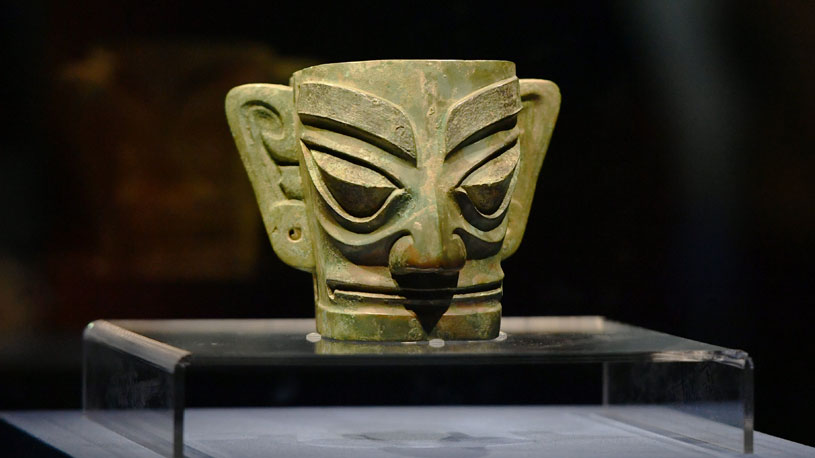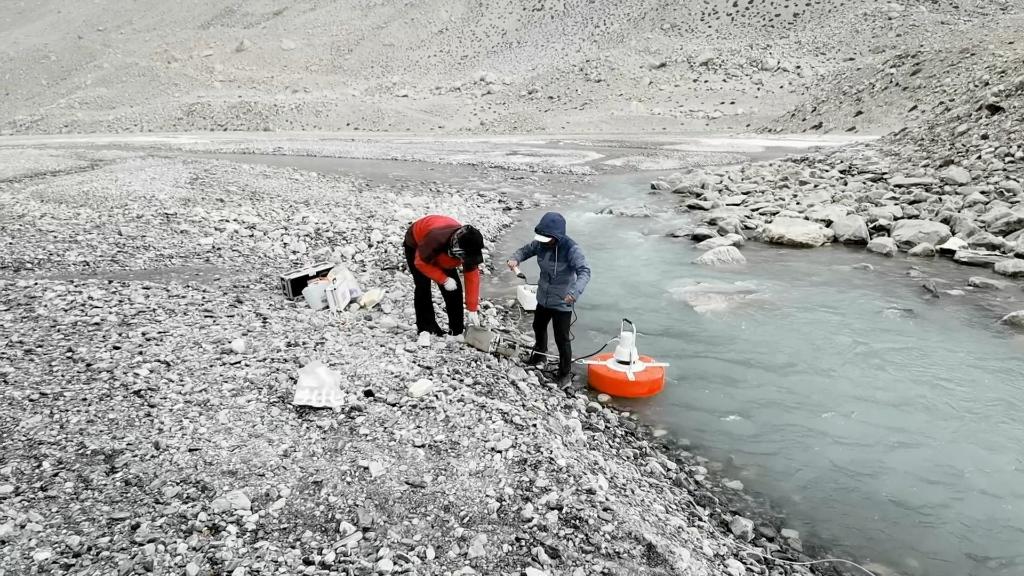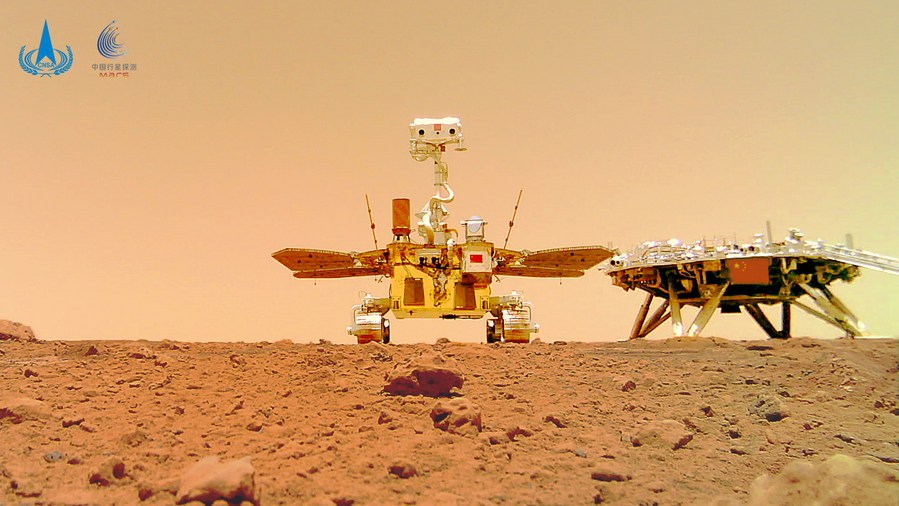
Photo released on June 11, 2021 by the China National Space Administration (CNSA) shows a selfie of China's first Mars rover Zhurong with the landing platform. (CNSA/Handout via Xinhua)
BEIJING, May 15 (Xinhua) -- It has been a year since China's Tianwen-1 probe landed Mars. The mission has not only marked an important step in the country's interplanetary exploration but has also made a number of achievements in that time.
The Tianwen-1 probe consists of an orbiter, a lander and a rover. On May 15, 2021, it touched down at its pre-selected landing area in Utopia Planitia, a vast Martian plain, marking the first time that China has landed a probe on the planet.
A week later on May 22, 2021, the Mars rover Zhurong, which resembles a butterfly, drove down from its landing platform to the Martian surface. On June 11, the China National Space Administration released the first photographs taken by Zhurong, signifying a complete success in the country's first Mars exploration mission.
FRUITFUL RESULTS
Since landing, Zhurong has continued moving southward and transmitted data back to Earth. It has completed explorations of the Martian surface, passed through multiple complex terrains, and detected Martian rocks, sand dunes and impact craters, obtaining a large amount of data using its onboard scientific equipment.
By Aug. 15, 2021, Zhurong had worked on the planet's surface for 90 Martian days, or about three months on Earth, accomplishing all exploration and detection tasks as planned. It was in good condition and continued service despite reaching its planned working target of 90 days.
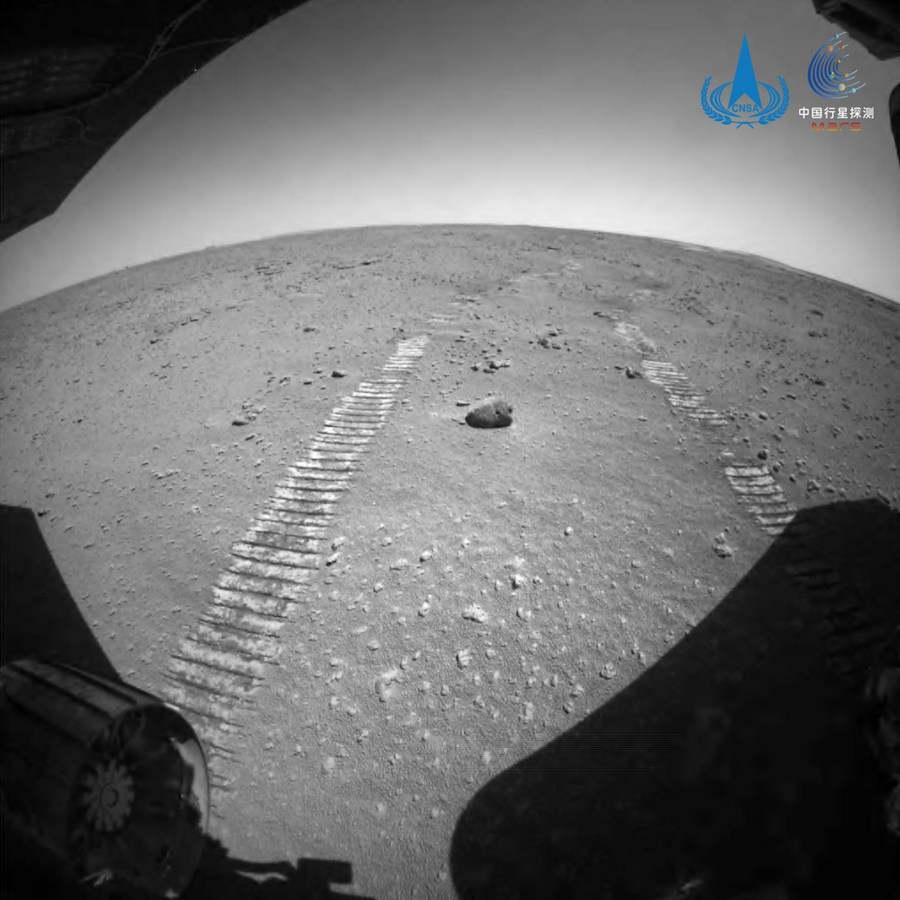
Photo released by the China National Space Administration (CNSA) shows an image taken by the rear hazard-avoidance camera onboard the rover Zhurong.(CNSA/Handout via Xinhua)
From late September to late October last year, the Mars orbiter and Zhurong suspended their explorations and relied on their own autonomous systems to survive their first solar outage, during which time solar electromagnetic radiation increased and disrupted communication between the probe and Earth.
In November 2021, Zhurong and the European Space Agency's Mars Express spacecraft performed an in-orbit relay communication test.
In May this year, using data gathered by Zhurong on the landing site, Chinese scientists found new evidence suggesting the presence of liquid water activity and hydrated minerals on the red planet.
By May 5, 2022, the Tianwen-1 orbiter had been operating for 651 days at a distance of 240 million km from Earth. Zhurong had been working for 347 Martian days and traveled 1,921 meters. The orbiter and rover, operating normally, had obtained approximately 940 gigabytes of data.
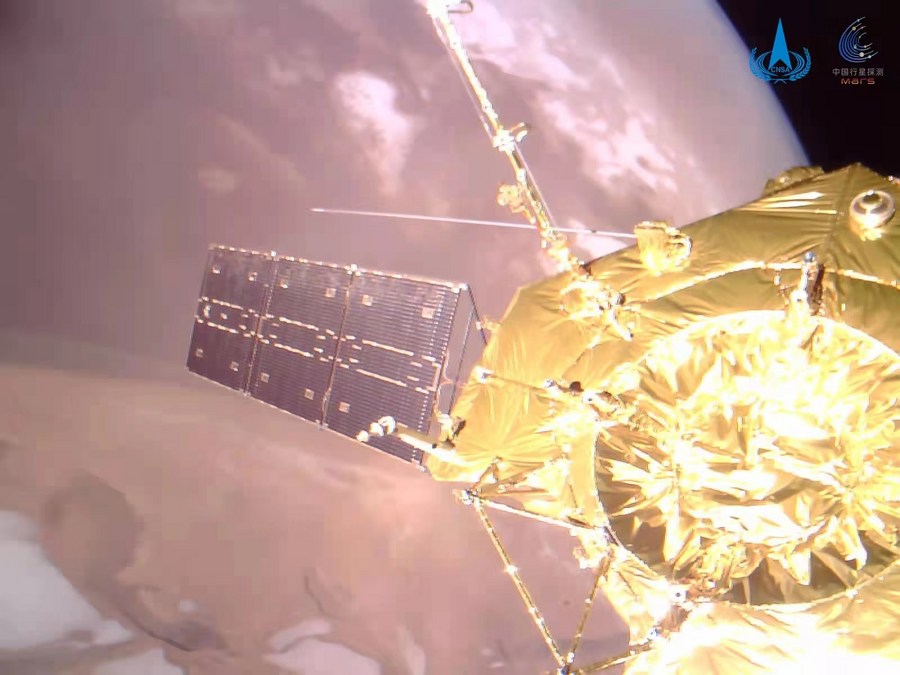
Photo released on Jan. 1, 2022 by the China National Space Administration (CNSA) shows the closeup of the orbiter. China released on the first day of 2022 a group of new Mars images taken by the Tianwen-1 probe. (CNSA/Handout via Xinhua)
FUTURE ENDEAVORS
The Tianwen-1 mission is only the beginning of China's planetary exploration, and many new endeavors are in the pipeline.
According to a white paper titled "China's Space Program: A 2021 Perspective," the country will continue its lunar exploration with the future Chang'e-6, Chang'e-7 and Chang'e-8 missions. It will complete the construction of an international lunar research station together with other countries, global organizations and partners.
Future plans also include launching an asteroid probe, retrieving samples from near-Earth asteroids, and retrieving samples from Mars.
The Tianwen-2 probe has entered the preliminary prototype development stage. ■

